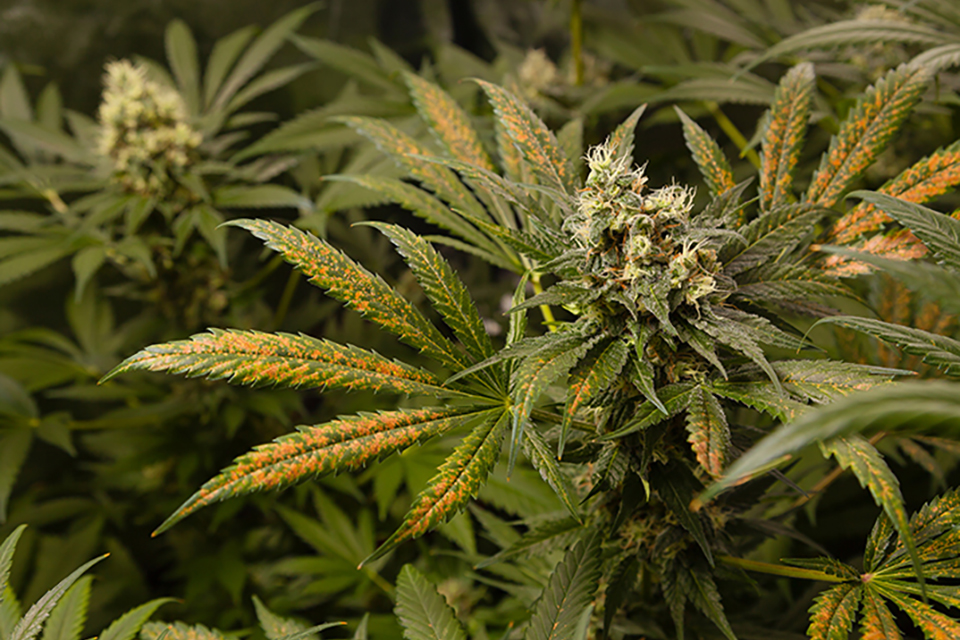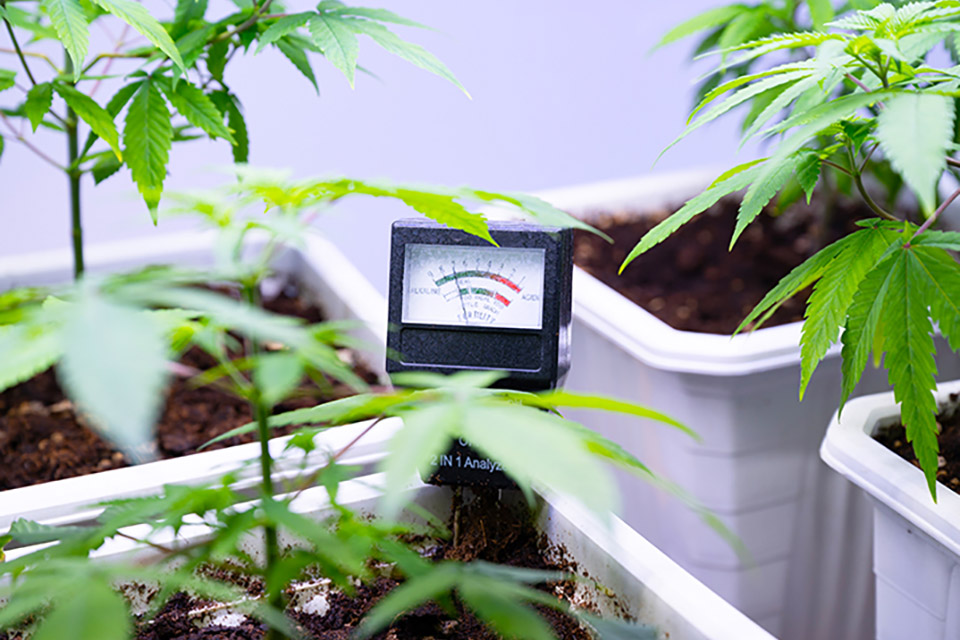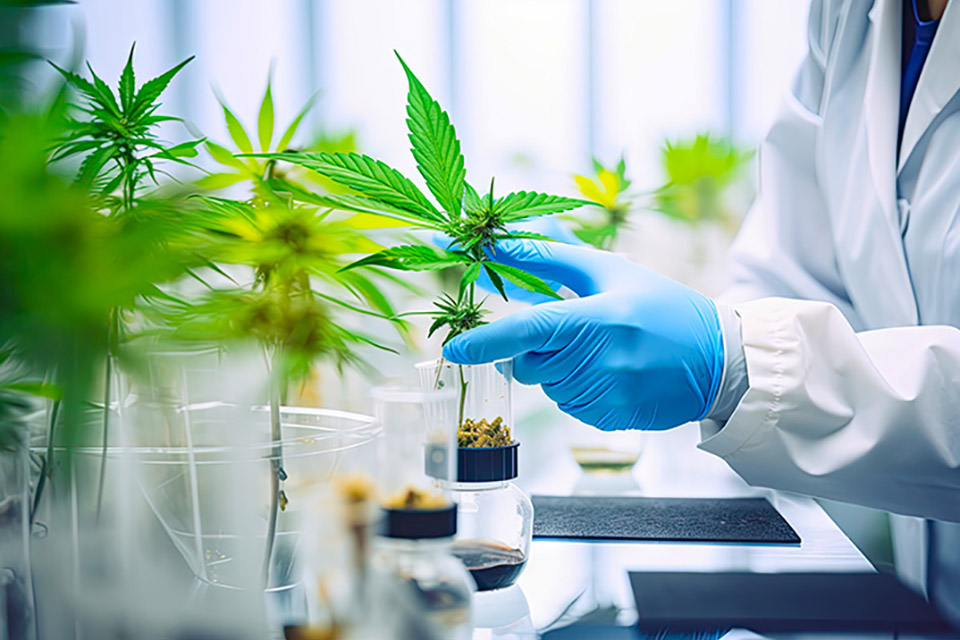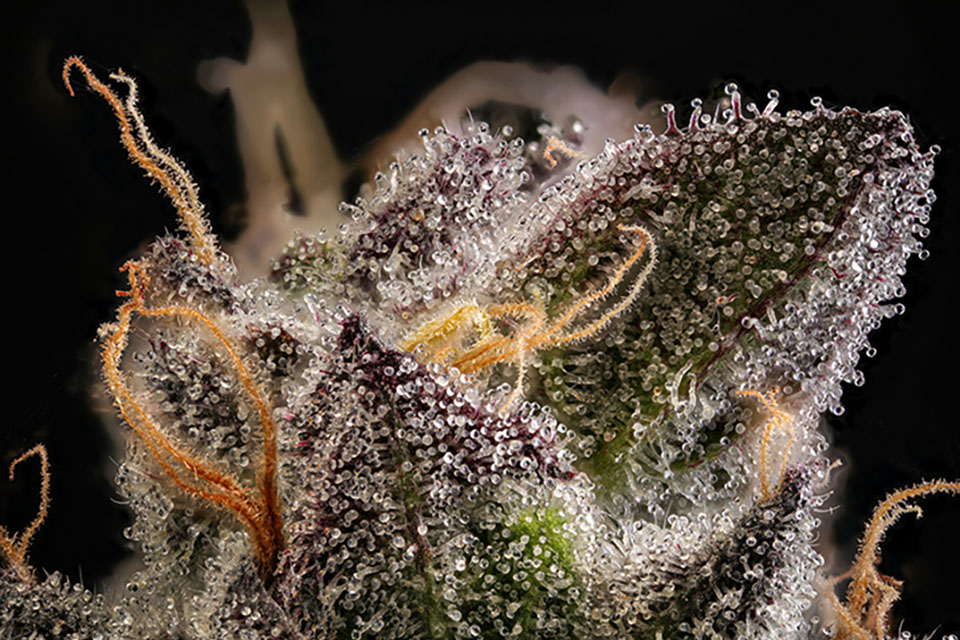
Phosphorus is a pivotal nutrient for the growth and development of cannabis plants. When a plant has a phosphorus deficiency, it can have negative effects on its health and yield. Explore the signs and symptoms of phosphorus deficiency and learn how to identify, treat and prevent it in your cannabis plants.
Identifying Phosphorus Deficiency
Phosphorus deficiency is often first noticed on older (lower) leaves and stems. The leaves may exhibit a dark green or purple coloration, starting from the tips and along the veins. As the deficiency progresses, leaves may curl downwards or present a dry, brittle texture. Stems, too, can turn a red or purple color. Take note, that these symptoms can be similar to other plant deficiencies or infections so do not jump to conclusions without further testing.
Soil and Nutrient Testing for Phosphorus Levels
To accurately diagnose a phosphorus deficiency in cannabis plants, soil and nutrient testing is an invaluable tool. Testing the pH levels of your soil is a reliable first step. Phosphorus is most available to plants in soil with a pH range of 6.0 to 7.5. Outside of this range, plants may struggle to absorb phosphorus even if it is present.
You can use simple home test kits from garden stores or online suppliers for nutrient testing. By measuring the nutrient content of your soil, you can confirm whether your plant’s symptoms are indeed due to a lack of phosphorus. Afterward, you will be better equipped to address the deficiency and return your cannabis plants to their optimum health.
Causes of Phosphorus Deficiency
Understanding the causes of phosphorus deficiency is necessary for pinpointing and rectifying the issue. Two main factors to examine are soil pH, nutrient imbalances and environmental conditions affecting phosphorus uptake.
Soil pH and Nutrient Imbalances
The availability of phosphorus to your cannabis plants depends on soil pH and nutrient balance. If your soil’s pH falls outside the optimum range of 6.0 to 7.5, phosphorus may become less accessible to your plants, leading to deficiency. Additionally, nutrient imbalances could be a potential cause. For instance, excessive levels of iron or aluminum can inhibit the plant’s ability to absorb phosphorus.
Environmental Factors Affecting Phosphorus Uptake
Environmental conditions can also influence phosphorus uptake in cannabis plants. Cold temperatures can decrease phosphorus availability, slowing the plant’s metabolic processes. Similarly, overly wet or compacted soils can also hinder phosphorus absorption, as these conditions can reduce soil aeration and increase the risk of root diseases. Understanding these factors is an integral step in diagnosing and treating phosphorus deficiency.
Treating Phosphorus Deficiency
Treating phosphorus deficiency involves twofold action: adjusting soil pH and nutrient levels and using phosphorus-rich fertilizers and supplements.
Adjusting Soil pH and Nutrient Levels
If soil pH limits phosphorus absorption, consider adjusting within the optimum range. This can be achieved using lime to raise the pH or sulfur to lower it. Additionally, reducing other nutrient levels, like iron or aluminum that interfere with phosphorus absorption, could improve the plant’s ability to obtain the necessary phosphorus.
Using Phosphorus-Rich Fertilizers and Supplements
In severe cases, it may be necessary to supplement your plants with phosphorus-rich fertilizers directly. These fertilizers are available in organic and chemical forms, and can quickly replenish phosphorus levels in your soil. Always follow the manufacturer’s recommended dosage to prevent nutrient burn or other related issues.
Preventing Phosphorus Deficiency
Regular soil testing and adjusting pH levels help maintain optimal phosphorus levels. Also, rotating crops and incorporating organic matter into the soil enhance its nutrient content and prevent phosphorus depletion.
Tips for Promoting Healthy Phosphorus Uptake in Cannabis Plants
Optimal environmental conditions promote healthy phosphorus uptake. Keep your plants in a temperature range between 65 and 80 degrees Fahrenheit and ensure the soil is well-drained and not overly compacted. Regular watering without waterlogging the soil promotes healthy root development which is necessary for phosphorus uptake.
Kind Seed Co’s Recommended Products
To help you grow healthy cannabis plants, Kind Seed Co recommends a range of phosphorus-rich fertilizers, supplements, and soil testing kits.
Phosphorus-Rich Fertilizers and Supplements
Our range of organic and chemical fertilizers is designed to replenish your soil’s phosphorus levels. We also offer phosphorus supplements that can be added to your plant watering regime to boost phosphorus levels.
Test Kits for Monitoring Soil Phosphorus Levels
Soil testing kits allow you to monitor phosphorus levels at home. These kits provide a detailed nutrient profile of your soil, enabling you to identify and address any deficiencies.
Beat Phosphorus Deficiency With Kind Seed Co
Phosphorus deficiency in cannabis plants can be a daunting challenge, but with accurate identification, proper treatment and proactive prevention, it is manageable. Regular soil testing, maintaining optimal pH levels, and using phosphorus-rich fertilizers when necessary can help you raise healthy and flourishing cannabis plants.
At Kind Seed Co, we are always ready to assist home growers with their inquiries and concerns.



